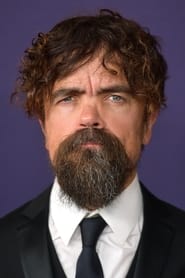
Ask Your Own Question
What is the plot?
"Fire & Steel: Creating the Invasion of Westeros" is a behind-the-scenes special that delves into the production of the epic series "Game of Thrones," focusing on the intricate details of creating the invasion of Westeros.
The special opens with a montage of the show's most iconic battles, setting the stage for the discussion of the creative process behind these monumental scenes. The producers and directors share their insights on the importance of authenticity in battle sequences, emphasizing the need for realistic choreography and the emotional weight of conflict.
As the narrative unfolds, the special highlights the extensive preparation that goes into staging a battle. The team discusses the casting of thousands of extras to portray soldiers, showcasing the logistical challenges of coordinating such large groups. They reveal the rigorous training that the actors undergo, including sword fighting and horseback riding, to ensure that their performances are believable and engaging.
The special then transitions to the design of the sets and costumes, illustrating how the visual elements contribute to the overall atmosphere of the invasion. The production designers explain their inspiration for the various locations, from the rugged landscapes of the North to the opulent settings of King's Landing. They detail the process of creating armor and weaponry that reflects the different cultures within Westeros, ensuring that each faction has a distinct look that aligns with their identity.
Next, the special delves into the use of special effects and CGI to enhance the battles. The visual effects team discusses the integration of digital elements with practical effects, such as fire and explosions, to create a seamless viewing experience. They provide a behind-the-scenes look at how they simulate large-scale destruction and the impact of dragons in battle, showcasing the technological advancements that allow for such grand visuals.
The emotional stakes of the characters involved in the invasions are also explored. The special features interviews with the cast, who share their perspectives on their characters' motivations during the conflicts. They discuss the internal struggles faced by characters like Daenerys Targaryen, who grapples with the weight of her family's legacy and the desire to reclaim the Iron Throne, and Jon Snow, who must balance his loyalty to his family with the greater good of the realm.
As the special progresses, it highlights specific battles from the series, breaking down key moments and decisions made by characters that drive the plot forward. The producers recount the planning stages of these battles, emphasizing the importance of pacing and tension in storytelling. They analyze how each battle serves as a turning point for the characters involved, shaping their arcs and relationships.
The special concludes with reflections on the impact of the battles on the overall narrative of "Game of Thrones." The creators express their hopes that the audience feels the weight of each conflict and understands the sacrifices made by the characters. They emphasize the collaborative effort that goes into creating such a complex and immersive world, leaving viewers with a deeper appreciation for the artistry behind the series.
What is the ending?
The ending of "Fire & Steel: Creating the Invasion of Westeros" focuses on the culmination of the creative process behind the invasion of Westeros as depicted in "Game of Thrones." It showcases the intricate planning, design, and execution of the various elements that brought the invasion to life on screen, emphasizing the collaborative effort of the cast and crew. The episode concludes with reflections on the impact of the invasion on the characters and the overarching narrative of the series.
In a more detailed narrative, the episode begins with a behind-the-scenes look at the early stages of conceptualizing the invasion of Westeros. The creators discuss the importance of establishing a sense of scale and urgency in the storyline. They highlight the challenges faced in portraying the vastness of the continent and the diverse cultures within it.
As the episode progresses, the focus shifts to the design of the armies and the strategic planning that went into the battles. The production team shares insights into the costume design, weaponry, and the choreography of the fight scenes. Each element is meticulously crafted to reflect the historical influences and the unique characteristics of the various factions involved in the invasion.
Key scenes feature interviews with the actors portraying pivotal characters, who express their motivations and emotional stakes in the conflict. For instance, the portrayal of Daenerys Targaryen is explored, emphasizing her determination to reclaim her family's throne and the burden of leadership she carries. The internal struggles of Jon Snow are also highlighted, showcasing his journey from a reluctant leader to a pivotal figure in the fight for the realm.
The episode culminates in a montage of the invasion scenes, interspersed with commentary from the directors and producers. They discuss the significance of the battles not just as physical confrontations but as moments of character development and moral dilemmas. The emotional weight of loss, sacrifice, and the quest for power is palpable as the characters navigate the treacherous landscape of alliances and betrayals.
As the episode draws to a close, the creators reflect on the legacy of the invasion and its impact on the characters' arcs. The fates of key figures are briefly summarized: Daenerys, driven by her vision of a united Westeros, faces the consequences of her choices; Jon Snow, embodying the struggle between duty and personal desire, finds himself at a crossroads; and other characters, each with their own motivations, are left to grapple with the aftermath of the invasion.
The episode ends on a contemplative note, inviting viewers to consider the complexities of power, loyalty, and the human experience within the grand narrative of "Game of Thrones."
Is there a post-credit scene?
In the episode "Fire & Steel: Creating the Invasion of Westeros," there is no post-credit scene. The episode serves as a behind-the-scenes look at the making of the series, focusing on the intricate details of the production, including the design and execution of the invasion scenes. It highlights the creative processes of the cast and crew, showcasing their dedication to bringing the world of Westeros to life. The episode concludes without any additional scenes or content after the credits, focusing instead on the insights and reflections shared throughout the special.
How did the production team create the visual effects for the invasion scenes in Westeros?
The production team utilized a combination of practical effects, CGI, and large-scale set pieces to depict the invasion of Westeros. They focused on creating realistic battle sequences that showcased the chaos and brutality of war, using detailed choreography and special effects to enhance the viewer's experience.
What were the challenges faced by the actors during the battle scenes?
Actors faced numerous challenges during the battle scenes, including physical exhaustion from long hours of filming, the need to perform complex fight choreography, and the emotional weight of portraying characters in life-or-death situations. Many actors described the experience as both exhilarating and daunting, as they had to fully immerse themselves in the intensity of the scenes.
Which characters were central to the invasion storyline and how did their motivations drive the plot?
Key characters central to the invasion storyline included Daenerys Targaryen, who was driven by her desire to reclaim the Iron Throne, and Jon Snow, who sought to unite the North against common threats. Their motivations were deeply rooted in personal loss, ambition, and the quest for power, which propelled the narrative forward and influenced their decisions during the invasion.
What specific historical influences were drawn upon for the invasion sequences?
The invasion sequences drew upon various historical battles and sieges, including elements reminiscent of the Norman Conquest and the Wars of the Roses. The production team aimed to capture the scale and brutality of these historical events, translating them into the fantasy setting of Westeros while maintaining a sense of realism.
How did the music score enhance the emotional impact of the invasion scenes?
The music score, composed by Ramin Djawadi, played a crucial role in enhancing the emotional impact of the invasion scenes. The use of powerful orchestral arrangements and haunting melodies underscored the tension and drama of the battles, evoking feelings of hope, despair, and triumph as characters faced their fates on the battlefield.
Is this family friendly?
"Fire & Steel: Creating the Invasion of Westeros" is a behind-the-scenes special that delves into the production aspects of "Game of Thrones." While it does not contain traditional narrative content, it may include elements that could be considered objectionable or upsetting for children or sensitive viewers.
-
Violence and Warfare: The special discusses the creation of battle scenes, which may include graphic depictions of violence, weaponry, and the chaos of war.
-
Death and Destruction: There may be discussions or visuals related to the aftermath of battles, including the impact on characters and the landscape, which can be emotionally intense.
-
Dark Themes: The series often explores themes of betrayal, power struggles, and moral ambiguity, which may be unsettling for younger audiences.
-
Strong Language: While the special may not feature explicit language, it is likely to reference the mature themes and language used in the series.
-
Emotional Weight: The emotional toll of war and conflict on characters may be discussed, which could resonate deeply with sensitive viewers.
Overall, while the special is informative and focuses on the creative process, it does touch on themes and visuals that may not be suitable for all audiences.
























